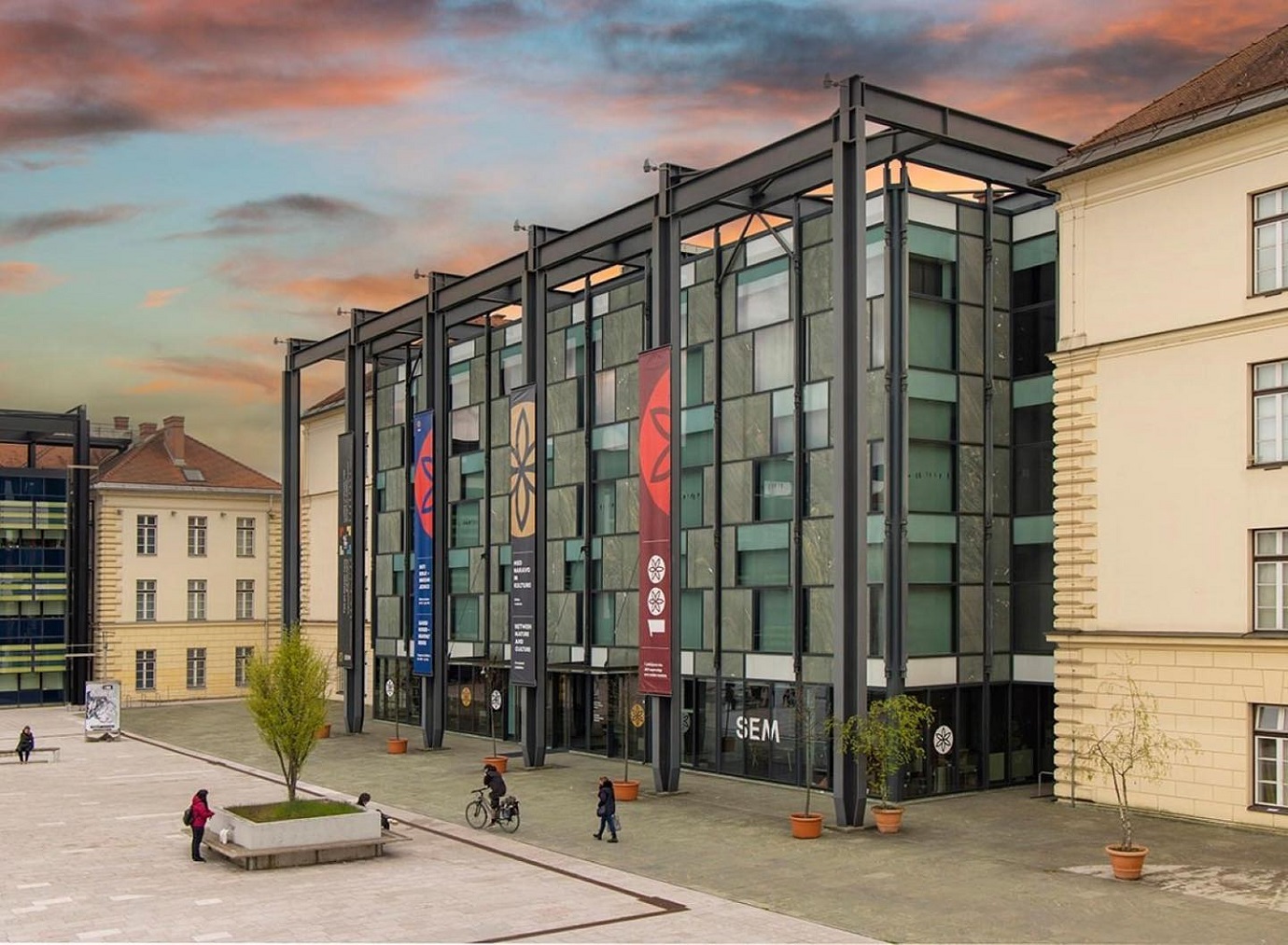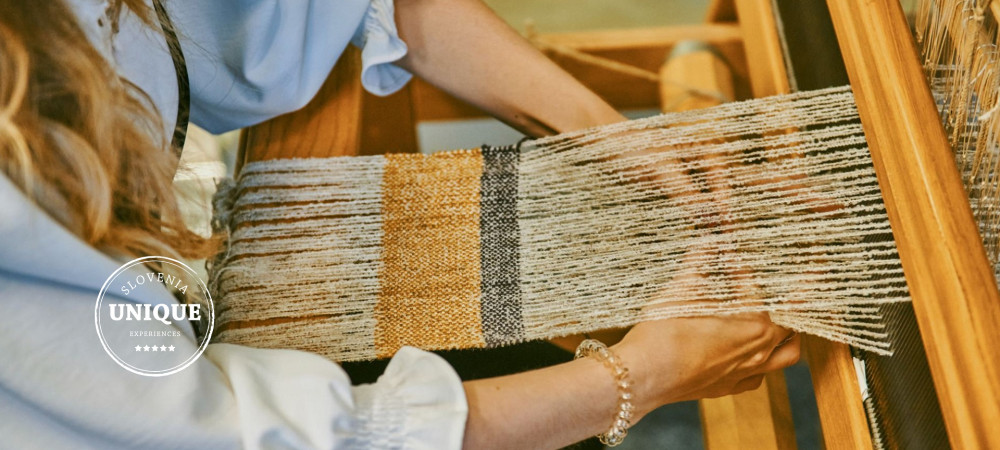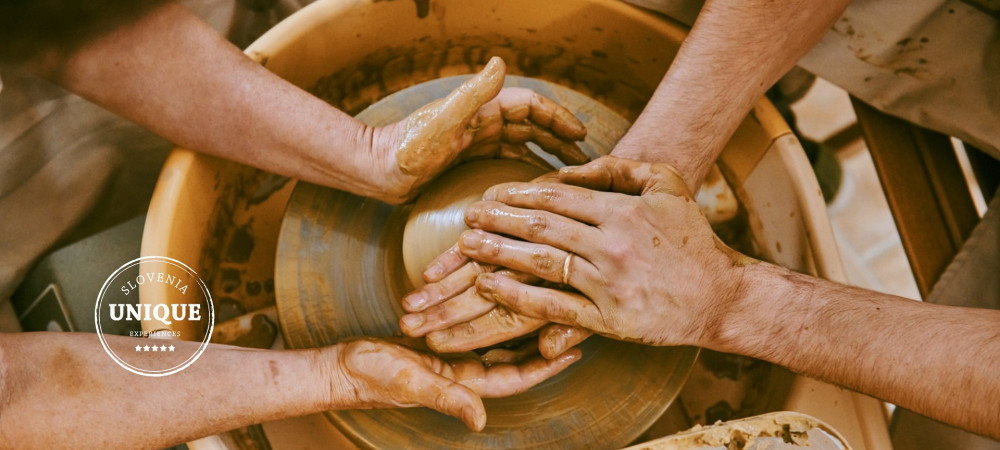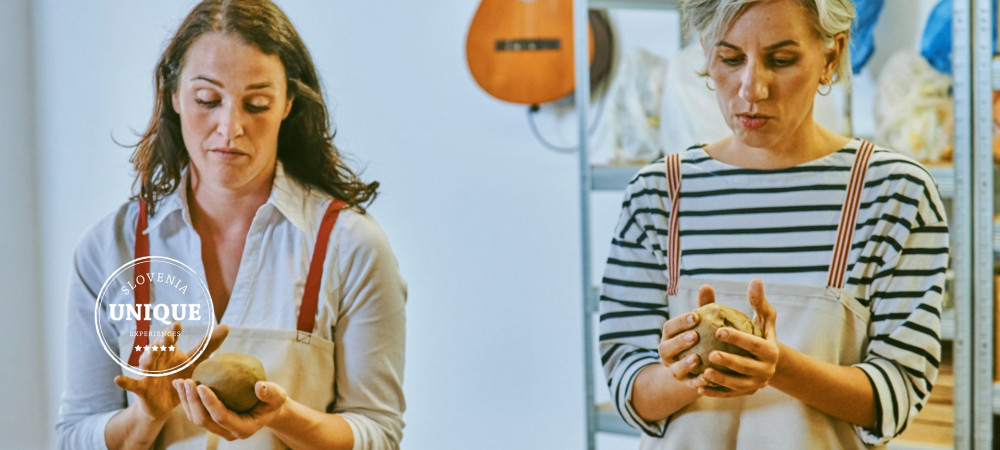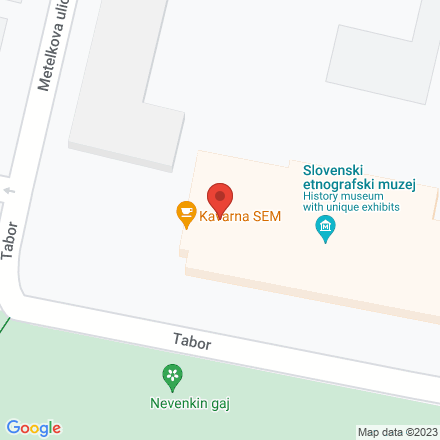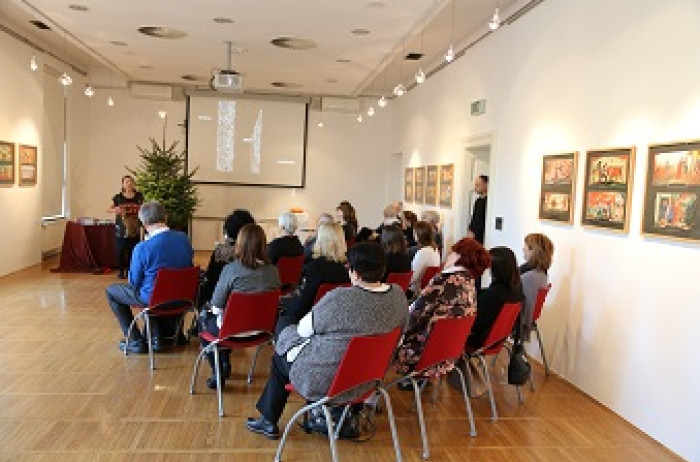The Museum was founded in 1923, when it separated from the National Museum of Slovenia. Its earliest origins go back to the collections put together by the Provincial Museum of Carniola (Deželni muzej za Kranjsko), established in 1821.
In order to present traditional culture of Slovenian inhabited areas and the cultures of several other peoples of the world, the Slovene Ethnographic Museum presents a programme of exhibitions and other events related to Slovenians (including Slovenian ethnic minorities abroad and expatriates) and other European and non-European peoples, runs a programme of educational events, and releases various publications. Exhibited artefacts and museum activities cover both material cultural heritage related to everyday and festive days and the intangible heritage of knowledge, values, skills, wisdom and creativity.
You are also warmly invited to visit the weaving and pottery workshops, the museum shop, and the café.
Permanent exhibitions
Man and Time: From Monday to Eternity
The exhibition shows people's perception of time, their working, leisure and festive time, as well as the influence of time on the way of living in different stages of life and socio-cultural environments.
Time is something we think about and talk about, feel, explore, measure and record from different angles. One can observe it in oneself, in other living beings, in objects, in space ... Divided into five conceptual sections, a number of objects, photographs and films are put on display showing the different shades of time.
Man and Time: The First 100
The exhibition features 100 objects, each telling its own unique story about its origin, makers, users, and its life within the museum. We view these objects and the lives connected to them through different lenses over time, as various eras bring distinct experiences. In this way, the Slovene Ethnographic Museum (SEM) acts as a bridge, constantly reconnecting us with the past and future through the testimonies of its collected artifacts. The exhibition presents objects that bear witness to clothing culture, such as the reconstruction of a costume from Valvasor's The Glory of the Duchy of Carniola; they speak of exceptionality, as seen in carved doors from the Poljane Valley; of usability, as testified in the items from an inn from the beginning of the 20th century; of creating in time, such as the Sunflower by the costume designer Alan Hranitelj; of memories, such as an emigrant's suitcase; and of the belonging we feel when we look at a firefighter's uniform. Part of the exhibition reflects Slovenians' encounters with cultures from around the world.
Between Nature and Culture
The Slovene Ethnographic Museum's permanent exhibition of over 3,000 items presents the treasury of Slovenia's and the world's ethnological heritage. It provides an insight into the purposes of exhibited artefacts and the ways our ancestors used them, and traces their transformations over time and space.
Plečnik's Lectarija
The exhibition displays the fixtures and fittings of Lectarija, the domestic arts and craft shop that was set up at 5 Congress Square in Ljubljana in 1940. The exhibited items include wooden display cabinets, a table and bench, a display window with a brass spiral which served as a support on which to arrange articles for sale, a massive round table from artificial stone, and a wooden chandelier with candles in a circle.
The shop furniture was donated to the Slovene Ethnographic Museum in 2000 by Agata Freyer Majaron and Rok Freyer, the son and daughter of Henrieta and Rok Freyer. The shop contents were restored by the museum and in 2004 they were included in the new museum building as both the museum shop and as cultural heritage. In 2021 Lectarija became a museum display and was incorporated into the permanent exhibition as ‘Plečnik’s Lectarija’. It is the only completely preserved shop interior designed by Jože Plečnik. There is also a connection between Plečnik and Lectarija, and Krbavčič's candle and honey products workshop and shop that stood at 55 Trubar Street, in Ljubljana. The exhibition also presents the whole of this shop interior, the tradition of which goes back to the inter-war years, when Plečnik used to call in.
The selected work of Jože Plečnik was inscribed on UNESCO’s World Heritage List in 2021. Through the exhibition ‘Plečnik's Lectarija’, the Slovene Ethnographic Museum emphasises the architect’s less well-known work and endeavours, as well as his attitude towards handicrafts. Exhibition is part of the programme marking the 150th anniversary of the birth of the architect Jože Plečnik, which Slovenia celebrated with UNESCO.
Intangible cultural heritage of Slovenia
The permanent exhibition on intangible cultural heritage at the Slovene Ethnographic Museum presents a rich treasure trove of practices, presentations, expressions, knowledge and skills that are inscribed in the national Register of Intangible Cultural Heritage.
Temporary exhibitions – selection
Asia in the Heart of Ljubljana: The Life of the Skušek Collection
The collection's exciting story began over a hundred years ago, when the Austro-Hungarian naval officer Ivan Skušek Jr returned to Ljubljana from his captivity in China. He and his Japanese wife Tsuneko Kondō Kawase brought with them a collection of exquisite East Asian artefacts in 75 large crates with the idea of establishing a museum of Asian cultures, which, however, they were unable to realise. So they put the collection on display in their own apartment, lived with it and showed it to their guests. Today, the collection is curated by SEM.
This is the largest collection of East Asian artefacts in Slovenia. The exhibition showcases some truly remarkable objects such as the model of a Chinese house recently assembled by experts from the Palace Museum in the Forbidden City in Beijing, a reconstruction of the Skušeks’ living room with selected pieces of carved furniture, porcelain items, Buddhist sculptures, silk embroidered garments, musical instruments and many mysterious objects.
